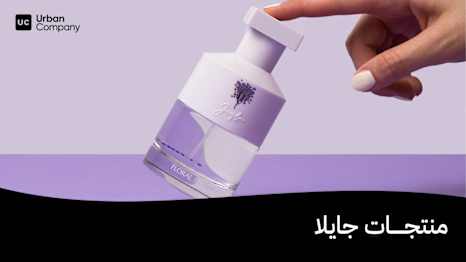
What Are Total Dissolved Solids In Water And What TDS Count Is Considered Safe?

By Urban Company
3 min read
Jan 05, 2024
Have you ever realised what your water contains? How does it harm or protect you? Let’s start with Total Dissolved Solids (TDS). The total concentration of inorganic salts, ...

Have you ever realised what your water contains? How does it harm or protect you? Let’s start with Total Dissolved Solids (TDS).
The total concentration of inorganic salts, minerals and organic matter in the water sample is called Total Dissolved Solids. These solids may not necessarily be harmful to you as they contain various ions like magnesium, sodium and potassium as well as a plethora of other substances like carbonates, bicarbonates and sulphates.
The TDS count in your water is typically measured in milligrams per litre (mg/L) or parts per million (ppm) and is an important indicator to determine the quality of your water supply. It indicates the overall mineral content in your water and its potential to conduct electricity. While a moderate TDS count in your water isn’t bad for you, higher TDS levels can affect its taste and quality and could be less suitable for your consumption. Conversely, an extremely low TDS count indicates that your water supply lacks essential minerals which are also not suitable for you to consume.
TDS in waterprovides insight into what substances are present in your water supply which have major implications in determining its quality and suitability for various uses. Here are some of the questions you need to answer while assessing your water supply:
TDS: What does total dissolved solids indicate?
The level of TDS in your water supply provides several vital insights:
Water quality
Higher TDS levels indicate the presence of a greater concentration of dissolved substances while low TDS count suggests purer water with fewer dissolved contaminants.
Taste and Odour
Higher TDS levels can have an impact on your water supply making it taste salty or sometimes bitter, while water that has optimum TDS levels will have a more neutral and fresher taste and smell.
Hardness in water
Hardness in water is primarily due to the presence of minerals like calcium and magnesium. High concentrations of such minerals or a high TDS count can contribute to hard water, which can cause scaling in pipes and reduce the effectiveness of soaps and detergents.
Water conductivity
TDS count also determines the electrical conductivity of your water supply. TDS measurements are used to assess whether the ions in water can conduct electricity which can be important in various industrial applications.
Water suitability
Specific TDS measurements are assessed to evaluate the water quality. Specific TDS limits and guidelines determine the suitability of water for different purposes like irrigation and industrial use.
TDS: What is the best total dissolved solids count for drinking water?
The optimum level of TDS for drinking water can vary and ultimately depend on your personal preference and local regulations. However here are a few guidelines you can follow:
Water with a TDS count of less than 300mg/L typically suggests a low count and is preferred by the majority as the water suitable to consume. Low TDS count is also associated with fresher and more neutral-tasting water.
A TDS count of 300-600 mg/L is also acceptable in many regions where tap water is considered safe for consumption. Water with a TDS count of more than 600mg/L has a noticeable salty taste due to the high concentration of minerals.
While it may not be harmful, it isn’t considered pleasant to drink. While local authorities don’t specify exact levels suitable to drink, it does provide guidelines as standard for consumption.
TDS: How to reduce total dissolved solids in water?
Total dissolved solids can be removed from your water supply using these three purifying methods:
Reverse Osmosis (RO):
RO purifiers like Urban Company’s Native RO purifier remove TDS is during reverse osmosis when water is forced under pressure through a synthetic membrane. The membrane prevents these dissolved solids from passing through it since they are larger than water molecules and leave TDS behind.
Distillation:
The process involves boiling water until it reaches the vapour stage. The vapour then rises to a cooler surface. This allows it to condense back into its liquid form. During the whole process, the dissolved solids are left behind since it isn’t able to vapourise, thus separating it from the water.
Deionisation:
During deionisation, water is passed through a positive and negative electrode. The ion-selective membrane then separates the positive ions or in this case, dissolved solids from the water and pushes them toward the negative electrode. As a result, we are left with de-ionised water that is highly pure and free from ionic organic contaminants dissolved in water.













